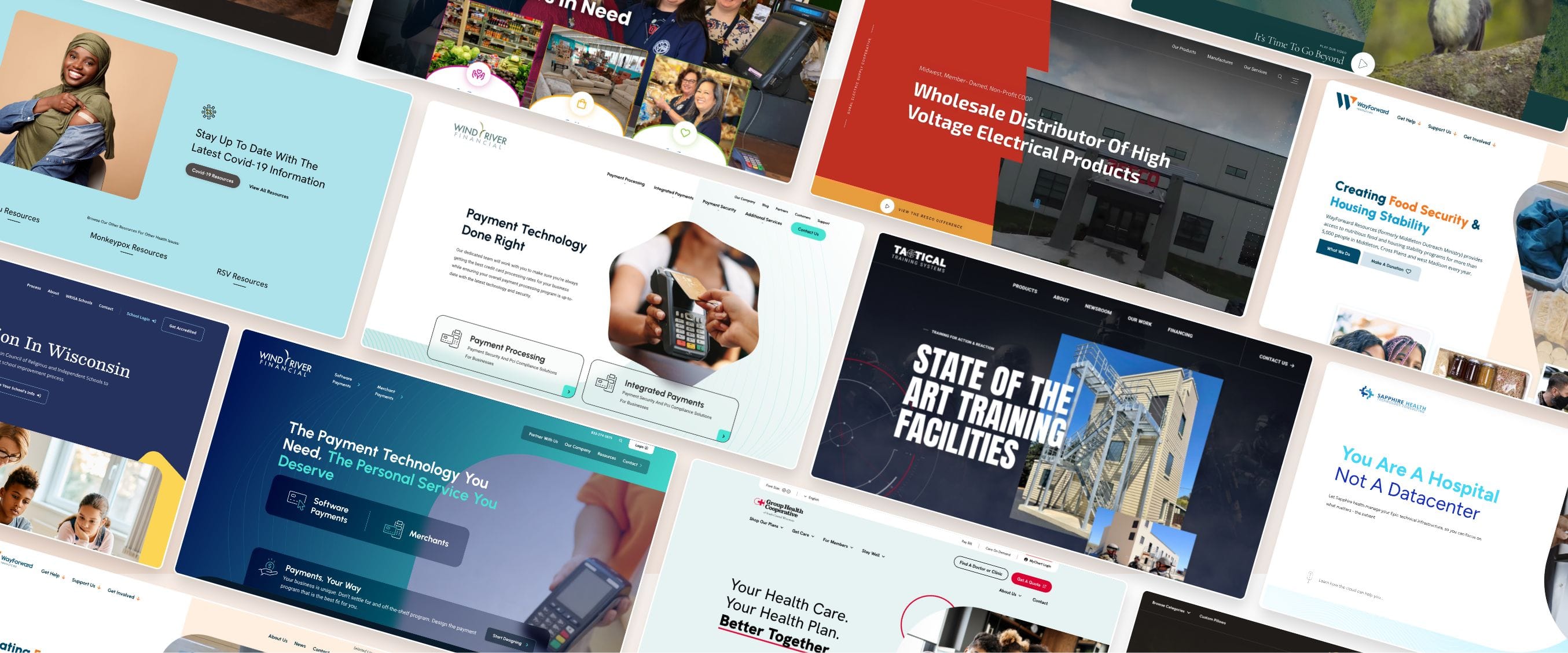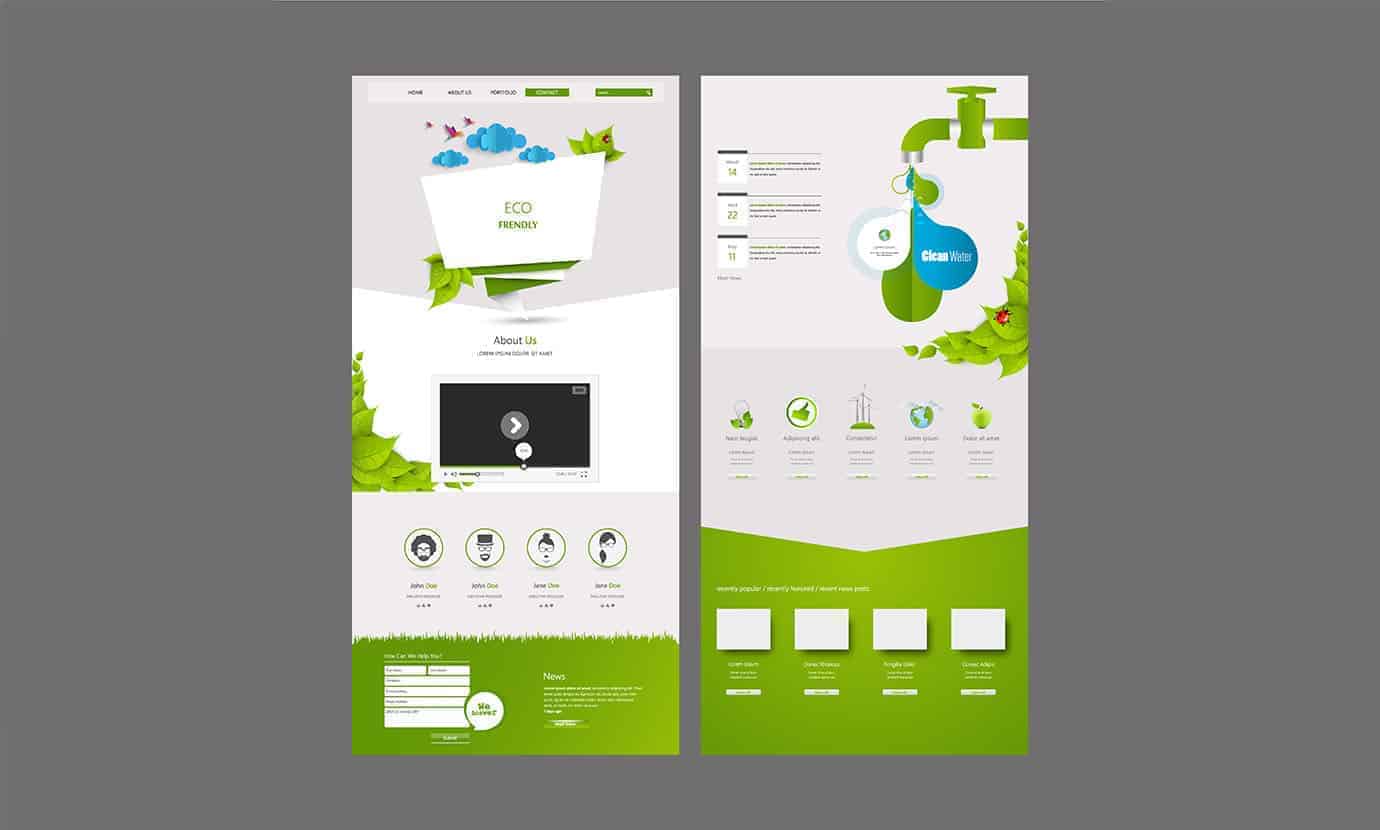How Website Design Can Impact Your Business Success and Online Presence
How Website Design Can Impact Your Business Success and Online Presence
Blog Article
Modern Internet Site Layout That Records Focus and Converts
In a progressively electronic landscape, contemporary web site layout has arised as an essential factor in capturing individual focus and driving conversions. As we explore these essential components, it comes to be clear that recognizing their interplay can considerably influence a site's efficiency and user complete satisfaction.
Importance of Visual Hierarchy
Visual pecking order is an important aspect in website design, as it guides individuals' interest and boosts their total experience. By strategically arranging material, designers can guide customers to the most crucial information initially, therefore raising involvement and enhancing functionality.
Incorporating a logical circulation in content setup is necessary; for example, positioning the most crucial information on top of a web page cultivates immediate acknowledgment. Regular use of typography, such as differing font dimensions and designs, aids establish a clear content framework. This organization not only aids in navigating but likewise constructs trust fund, as individuals really feel much more comfy when they can easily locate what they are searching for.
Inevitably, a well-executed visual hierarchy not only enhances aesthetic charm but additionally substantially impacts user actions. By focusing on necessary aspects and making certain a seamless experience, designers can successfully convert visitors into consumers, enhancing the importance of this fundamental design concept in contemporary site advancement.
Responsive Style for All Devices
Creating a smooth experience throughout different gadgets is important in today's electronic landscape, where customers gain access to web sites from desktops, smart devices, and tablets alike. Receptive style is an essential approach that makes sure sites adapt fluidly to different display orientations, resolutions, and sizes. By employing versatile grids, photos, and CSS media questions, designers can create formats that maintain visual integrity and performance, regardless of the device being utilized.
The value of receptive design expands past looks; it directly influences customer involvement and conversion prices. A site that operates well on all devices urges longer check outs and decreases bounce prices, as individuals are more probable to interact with content that is simple to navigate. In addition, internet search engine, specifically Google, prioritize mobile-friendly websites in their rankings, making responsive layout a crucial component of search engine optimization (SEO)
Incorporating responsive style not just boosts user experience but likewise improves the advancement process. By developing a single website that works across devices, companies can conserve time and resources compared to creating different mobile and desktop versions. Ultimately, responsive design is an essential approach for modern-day internet site style, ensuring ease of access and satisfaction for all customers, despite their gadget.
Engaging Interactive Aspects
While a receptive design lays the groundwork for a functional web site, incorporating appealing interactive aspects is essential for catching customer focus and fostering deeper links. Website Design. Interactive elements, such as computer animations, quizzes, and clickable infographics, develop a more vibrant customer experience, urging site visitors to invest even more time on the website
Incorporating interactive features can also lead individuals through complicated info, making it much easier to digest web content. Interactive sliders can highlight item variants, while ingrained videos can supply demos or testimonies that reverberate more than fixed images or message. Furthermore, gamification strategies, like rewards for involving or finishing jobs with content, can boost user inspiration and retention.
Effective use of interactive components learn the facts here now not just improves the individual experience however can also lead to greater conversion prices. It is vital to balance interactivity with efficiency; excessively complicated functions might impede site speed, negatively affecting customer complete satisfaction.
Streamlined Navigation Practices
Efficient navigating is a keystone of any successful website, as it directly affects customer experience and content availability. Streamlined navigating practices ensure that users can easily locate info, boosting their interaction with the website. A well-structured navigation menu should be intuitive and easy, normally including a minimal number of key categories to stay clear of overwhelming visitors.
To achieve streamlined navigating, developers must prioritize an ordered framework that rationally arranges web content. Carrying out breadcrumb trails can supply customers with context concerning their existing location within the site, enabling seamless backtracking. In addition, using drop-down menus can properly save space while still giving access to subcategories.
Responsive layout is critical, as navigation must be useful throughout all tools (Website Design). Mobile customers, in particular, gain from touch-friendly menus and retractable sections that maintain functionality without endangering appearances

Efficient Call-to-Action Methods
A well-crafted call-to-action (CTA) is vital for directing individuals towards preferred results on an internet site, as it urges them to engage with material or purchase. To optimize their efficiency, CTAs should be clear, compelling, and purposefully positioned throughout the site.
First, make use of action-oriented language that interacts urgency or value, such as "Begin," "Sign up with Now," or "Claim Your Discount." This language not just inspires users but additionally sets clear assumptions concerning the next steps.
2nd, think about design components; CTAs should stand apart aesthetically with contrasting colors, enough whitespace, and noticeable positioning. A switch that is simple to see and click boosts the probability of individual straight from the source communication.
Additionally, personalizing CTAs based upon individual actions or demographics can substantially improve engagement. Tailored messages click to find out more resonate more with individuals, driving greater conversion rates.

Conclusion
In conclusion, modern internet site design stresses the combination of aesthetic hierarchy, responsive layouts, engaging interactive components, streamlined navigating, and effective call-to-action strategies. These parts collectively improve individual experience, making certain that visitors remain involved and inspired to check out web content additionally. By prioritizing these design concepts, businesses can considerably enhance customer retention and conversion prices, eventually leading to better success in the electronic landscape. The continual evolution of website design highlights its vital role in effective on-line communication and advertising.
In a significantly digital landscape, contemporary web site layout has actually emerged as a critical aspect in recording individual interest and driving conversions.Visual power structure is a vital component in web site style, as it overviews users' interest and enhances their general experience.The significance of responsive layout expands past appearances; it directly influences individual engagement and conversion rates.Incorporating receptive design not only improves user experience however also enhances the development procedure. Inevitably, receptive layout is a basic method for modern-day internet site layout, making certain access and fulfillment for all customers, no matter of their device.
Report this page